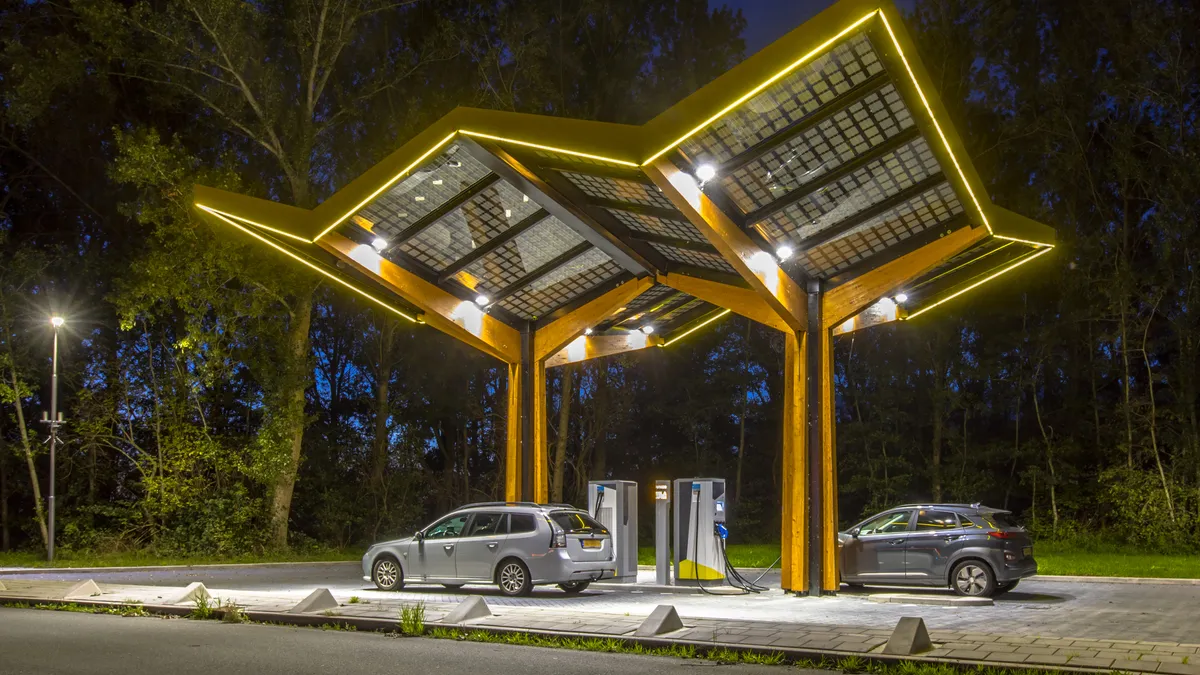EV ownership continues to increase thanks to a confluence of environmental concerns, rising gas prices, and federal incentives helping to lower the cost of ownership. Yet on-the-go charging remains a significant sticking point. According to a recent study, public satisfaction with Level 2 charging stations declined 16 points in the last year, and for fast DC chargers, it was an even worse decline of 20 points.
Many of the issues consumers are facing with charging stations relate to maintenance and functional issues. A 2022 study found that over 25% of chargers were broken in the San Francisco Bay area, a region with high EV adoption where it would be expected that charging stations would be well-maintained. But like most energy infrastructure in the U.S., existing charging stations are nearing the end of their lifespan and require upgrades and repairs.
Cities, carmakers, charging companies and utilities are aware of these issues. With $5 billion in funding coming from the National Electric Vehicle Infrastructure (NEVI) Formula Program, now is the time for investments in charging infrastructure to meet the growth of transportation electrification.
A key component will be faster, more efficient repair operations, and for those to succeed, cities, utilities and any charge point operators (CPOs) need remote access for charger maintenance. Remote access is quicker and more cost-effective than reactive maintenance, and it will facilitate the charger reliability needed for widespread EV adoption.
Let’s take a closer look at how remote access improves on-the-go-charging:
Faster diagnostics and reboots to keep chargers functioning
What is the first thing IT asks you when you’re having a computer issue — did you restart? For EV chargers, the same guidance applies. As Mark Seitz, Senior Business Manager with Franklin Electric EV Systems, notes, the most common cause of a charger outage is a communication failure in the charger itself. “There are a lot of different pieces working together to charge a customer’s vehicle, and they can freeze up, just like a computer,” he explains.
In most cases, a hard reboot of the charger’s power source will bring it back online. The issue is, sending a technician to the site for this simple reboot can be both costly and time consuming for CPOs. With remote monitoring and control of a site’s power distribution source, provided by Franklin Electric’s NexPhase™ Smart EV Switchgear, CPOs can troubleshoot and restart their sites remotely, quickly bringing chargers back online. This technology also allows CPOs to verify their switchgear components are working properly and also track and monitor utility power availability. They can initiate a power cycle remotely to power cycle chargers without having to send a technician onsite.
Stopping problems before they start
With NEVI funding aiming to establish EV charging stations every 50 miles along interstate highways, the U.S. will see explosive growth in these chargers. Not only will the sheer numbers increase, but many will be located in remote areas.
Servicing these chargers on a static schedule, or reacting only when an outage is flagged by an EV driver, will be complex at best and prohibitively difficult at worst. Remote monitoring drives better maintenance by alerting CPOs to issues before they become outages. With remote solutions, technicians can see if utility power is adequately flowing to chargers, and they can monitor the charger and switchgear infrastructure. If they detect a problem, a CPO can dispatch a technician to service particular chargers or address utility power issues before they take chargers offline.
The right systems can provide additional proactive measures. Franklin Electric’s NexPhase™, for example, identifies if a charger hasn’t been used for a defined period of time so that CPOs can check for problems. “A charger unused for a long period of time may be experiencing a communication error, vandalism, or site obstruction. Our technology makes CPOs aware before a customer even reports an outage,” Seitz says.
Reducing costs for maintenance providers
Proactive maintenance and conducting remote operations allow CPOs to prioritize their resources. A truck roll can cost around $700 each, so reducing the number of rolls by remotely rebooting a charger quickly adds up to significant cost savings.
Similarly, prioritizing workers’ hours is crucial in today’s tight labor market. It’s estimated that the need for electricians will grow 7% in less than a decade, so as the workforce remains constrained, CPOs must deploy technicians only when and where they’re needed. Remote technology facilitates this strategy because it flags issues that require intervention while also allowing troubleshooting to take place remotely.
Better maintenance also helps secure grants and federal funding for EV charging infrastructure projects. To qualify for federal funds for NEVI projects, CPOs must demonstrate charger uptime of at least 97%. Faster reboots, preventing issues from becoming outages, and prioritizing repairs when they’re needed all allow CPOs to meet the new requirements. “With a five-year maintenance plan required for NEVI funding, CPOs must take reporting seriously and develop effective strategies to not just achieve that 97% uptime, but to be able to prove it,” says Seitz.
Electrifying the future
There is no doubt that EVs are the transportation mode of the future, but to achieve transport decarbonization, reliable on-the-go charging is a necessity. The ability to find a working charger in high-density cities where drivers may not have garages and home chargers will be vital to make the transition to EVs a success. The same applies to rural areas where there may not be large numbers of maintenance personnel to address charger problems right away.
By improving charging infrastructure through remote access and maintenance, CPOs, cities and utilities can facilitate the EV evolution and gain a profitable stake in the transport networks of the future.
Contact Franklin Electric EV Systems to learn more about how NexPhase™ can improve your charging infrastructure.










